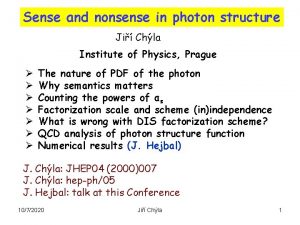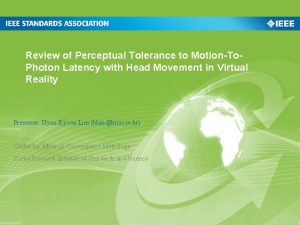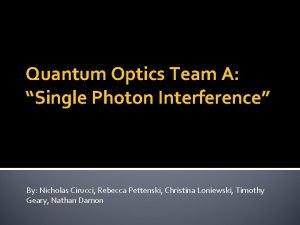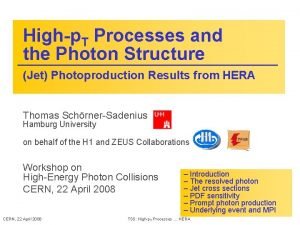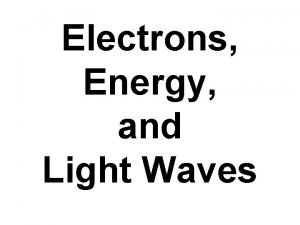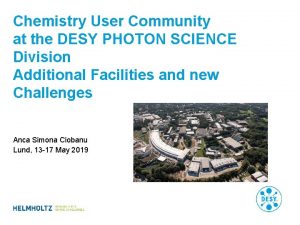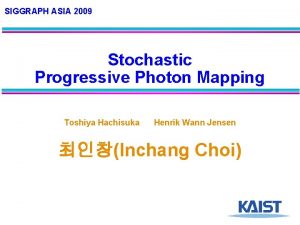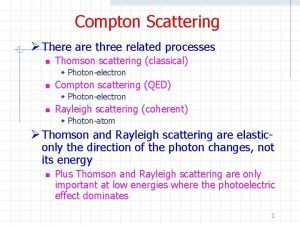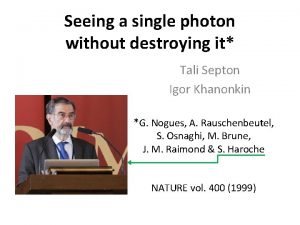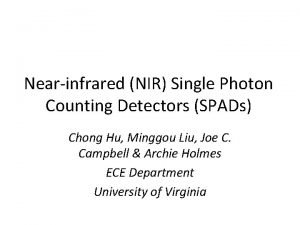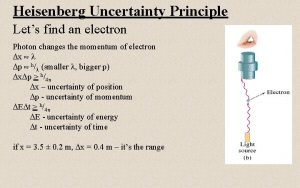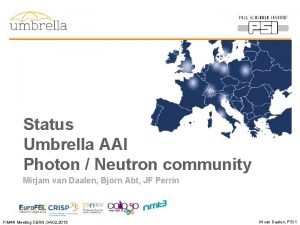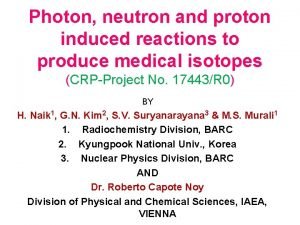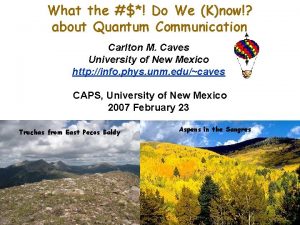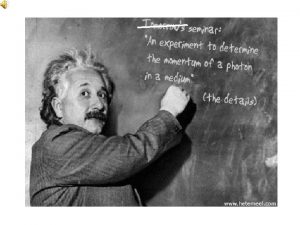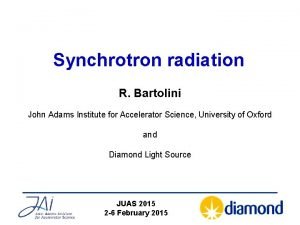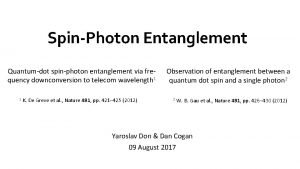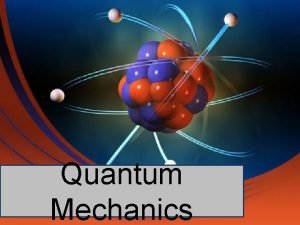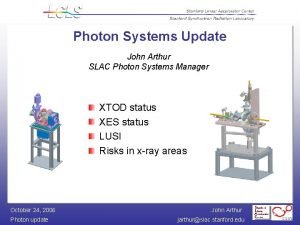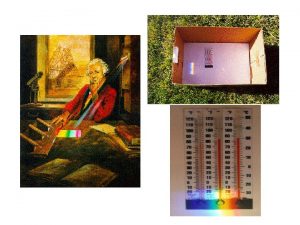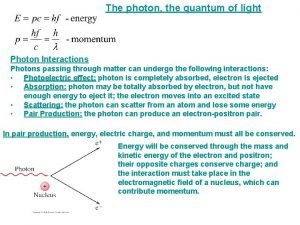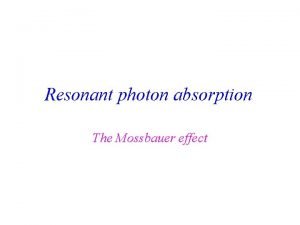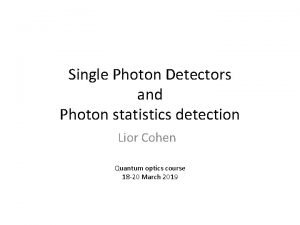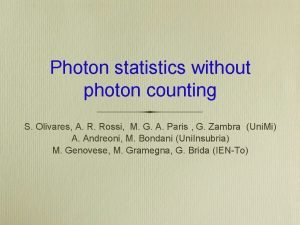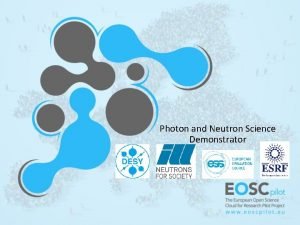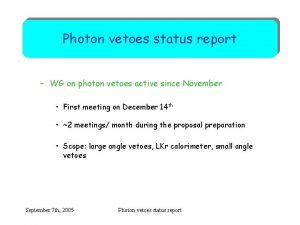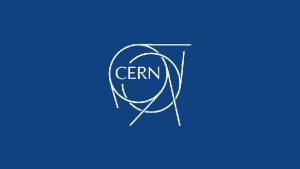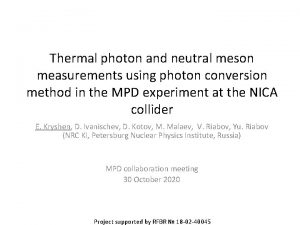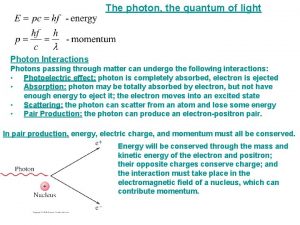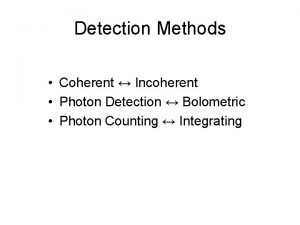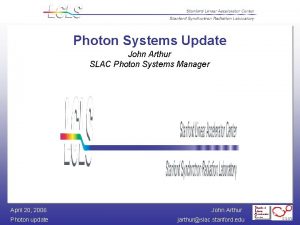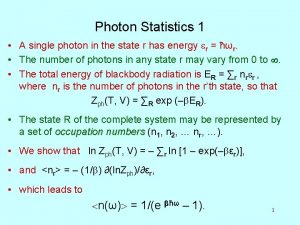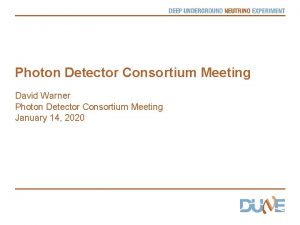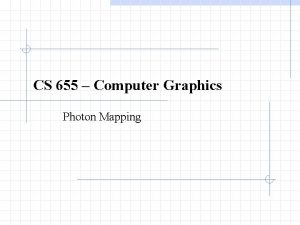Introduction to the Advanced Photon Source The Advanced
























- Slides: 24

Introduction to the Advanced Photon Source The Advanced Photon Source (APS) at the U. S. Department of Energy Office of Science’s Argonne National Laboratory provides this hemisphere’s most brilliant highenergy x-ray beams for research in almost all scientific disciplines. The APS is funded by the U. S. Department of Energy Office of Science

A Powerful Light for Science § § § The high-energy, penetrating x-ray beams from the Advanced Photon Source give scientists access to a powerful, versatile, invisible light that is ideal for: Studying the arrangements of molecules and atoms Probing the interfaces where materials meet Determining the interdependent form and function of biological proteins and Watching chemical processes that happen on the nanoscale Advanced Photon Source, Argonne National Laboratory 2

APS x-rays allow thousands of scientists from the U. S. and other countries to pursue new knowledge about the structure and function of materials, from the center of the Earth to outer space and all points in between. The knowledge gained from this research can impact the evolution of combustion engines and microcircuits, aid in the development of new pharmaceuticals, and pioneer nanotechnologies whose scale is measured in billionths of a meter, to name just a few examples. These studies promise to have far-reaching impact on our technology, economy, health, and our fundamental knowledge of the materials that make up our world.

APS Users § In fiscal year (FY) 2014, more than 5, 300 scientists participated in research at the Advanced Photon Source § Those researchers carried out more than 5, 700 experiments at the Advanced Photon Source in FY 2014 § Advanced Photon Source researchers authored or co-authored more than 1, 800 peer-reviewed publications in calendar year 2013 § Users of the Advanced Photon Source have solved more biological macromolecular structures than users of any other synchrotron light source in the world Advanced Photon Source, Argonne National Laboratory 4

A Brighter Energy Future and the APS § Argonne is at the cutting edge of the effort to create new, efficient battery technologies, focusing on the lithium-ion battery; scientists using the APS are playing a major role in advancing battery technologies § Scientists using the APS have developed an x-ray imaging technique that peers through high-speed, dense liquids and is being used to examine the internal structure of liquids at the moment they leave an injector nozzle in order to improve fuel-injector efficiency and clean engine combustion § Researchers are using high-brightness x-rays from the APS to study new materials for power plants based on turbine engines burning natural gas, a key component of future energy grids in the U. S. and other nations, supplying clean, increasingly fuel-efficient, and relatively lowcost energy Advanced Photon Source, Argonne National Laboratory 5

Environmentally Friendly Research at the APS § Using x-ray beams from the APS, researchers found that by the time ironite fertilizer gets to lawns, gardens, and agricultural crops, decomposition of certain elements could result in arsenic and leaching into soil, showing that care must be taken when reusing mine waste products to assure that the benefits outweigh the costs and risks posed by accidental contamination of soil and water § New insights have been obtained at the APS into the way a seemingly simple plant virus, the turnip crinkle virus, goes about replicating in infected cells, research that could have implications for coping with crop-plant viral diseases § Nuclear power plants produce a host of radioactive isotopes as byproducts, such as Iodine-129, with a half-life of nearly 16 million years. Because iodine plays a role in human metabolism, radioactive 129 I is especially dangerous if it escapes into the environment. Researchers utilizing the APS have uncovered new information that might lead to improved long-term storage of Iodine-129. Advanced Photon Source, Argonne National Laboratory 6

Earth’s Mysteries and the APS § Deep inside the Earth— 2, 900 kilometers (1, 800 miles) below the surface, between the mantle and outer core—is the D″ layer, which has long mystified geologists because it exhibits characteristics very different from the rest of Earth’s interior § High-pressure/high-temperature research at the APS and other synchrotron x-ray light sources is uncovering the secrets of the D″ layer, which may hold clues to the origins of seismic disruptions such as volcanos § Scientists use x-ray beams from the APS to “travel” down into the interior of the Earth by utilizing tools such as diamond anvil cells and high-powered lasers to replicate the pressure and temperature conditions (respectively) found near the center of our planet, applying those conditions to materials thought to exist deep inside the Earth, and then employing APS x-ray beams to collect data for analysis § For instance, x-ray research carried at the APS indicates that the D″ layer is probably composed of a recently-discovered crystalline mineral phase called a “post-perovskite” Advanced Photon Source, Argonne National Laboratory 7

Metals Technology and the APS: A Few Examples § Metals are essential materials for many of our most economically important industries and technologies, as well as for our security § Understanding why and how metals deform improves their structural properties and helps eliminate component failure. Researchers used APS x-ray beams to capture "snapshots" of the evolution of defect patterns in copper during deformation, providing revolutionary insights into how this metal responds to weight § Scientists using APS x-ray beams are investigating how to improve shape-memory alloys that have a unique, almost magical ability to “remember” their original shape, making them useful for military, medical, safety, and robotics applications § Studying changes to the molecular structure of a titanium alloy that features prominently in products from turbine blades to airframes, from hip joint replacements to pacemakers, will affect its mechanical properties after welding and heat treatment Advanced Photon Source, Argonne National Laboratory 8

Fighting Disease with the APS § Scientists use high-brightness x-rays from the APS to determine the structures of biological proteins associated with a multitude of diseases, leading to new or improved pharmaceuticals and treatments § Researchers using the APS solve more protein structures than users of any other synchrotron x-ray light source in the world § The APS played a crucial role in the development of the Abbott Laboratories pharmaceutical Kaletra®, which in 2002 became the most-prescribed drug in its class for AIDS therapy, § and in the development of the anti-cancer drug pazopanib, which is marketed as Votrient™ in the U. S. and Europe by its developer, Glaxo. Smith. Kline, for the treatment of advanced renal cell carcinoma § All three recipients of the 2009 Nobel Prize in Chemistry utilized the APS (and other x-ray light sources) to reveal the atomic structure of the ribosome, the molecular factory that synthesizes thousands of proteins that make up every living cell Advanced Photon Source, Argonne National Laboratory 9

2009 Chemistry Nobel to APS Researchers § § § All three recipients of the 2009 Nobel Prize in Chemistry published papers on their awardwinning work at the APS in determining the structure and function of the ribosome which works as a protein factory in all organisms from humans to bacteria. Venkatraman Ramakrishnan (England's, Medical Research Center), Thomas Steitz (Yale University); Ada Yonath (Israel's Weizmann Institute) have published more than 60 papers that describe research performed at the APS relevant to the structure and function of the ribosome. Most of the Argonne Nobel-related work was performed at the SBC-CAT beamline at the APS, Steitz and Yonath also used three other APS beamlines: GMCA-CAT, NE-CAT, and Bio. CARS Clockwise from top left: Ada Yonath, Venkatraman Ramakrishnan, and Thomas Steitz. Advanced Photon Source, Argonne National Laboratory 10

The 2012 Nobel Prize in Chemistry to APS Researcher § § § 2012 Nobel Prize in Chemistry awarded to Brian Kobilka (Stanford U. , left above) and Robert Lefkowitz (HHMI, Duke U. ) for work on G-protein-coupled receptors (GPCRs) 2011 study by Kobilka et al. at APS Sector 23 provided the first high-resolution look at transmembrane signaling by GPCR Added critical insight about signal transduction across the plasma membrane, a discovery the Nobel announcement deemed “The Holy Grail, a high-resolution structure of an active ternary complex” S. G. F. Rasmussen et al. , Nature 477, 549 (29 September 2011) DOI: 10. 1038/nature 10361 Advanced Photon Source, Argonne National Laboratory The structure of the β 2 AR-Gs complex 11

The Accelerator Systems – The Linac The APS electron accelerator and storage system are the first critical steps in producing the high-energy x-rays that are used for frontier research. Producing brilliant x-ray beams at the APS begins with electrons emitted from a cathode heated to ~1100° C. The electrons are accelerated by high-voltage alternating electric fields in a linear accelerator (linac). Selective phasing of the electric field accelerates the electrons to 450 million volts (Me. V). At 450 Me. V, the electrons are relativistic: they are traveling at >99. 999% of the speed of light, which is 299, 792, 458 meters/ second (186, 000 miles/second).

The Accelerator Systems - The Booster Synchrotron Electrons are injected into the booster synchrotron, a racetrack-shaped ring of electromagnets, and accelerated from 450 Me. V to 7 billion electron volts (7 Ge. V) in one-half second. (By comparison, the electron beam that lights a TV screen is only 25, 000 electron volts. ) The electrons are now traveling at >99. 999999% of the speed of light. The accelerating force is supplied by electrical fields in four radio frequency (rf) cavities. In order to maintain the orbital path of the electrons, bending and focusing magnets increase the magnetic field strengths of the electrons in synchronization with the rf field.

The Accelerator Systems — The Electron Storage Ring 7 -Ge. V electrons are injected into the 1104 -m-circumference storage ring (right), a circle of more than 1, 000 electromagnets and associated equipment located in a concrete enclosure inside the experiment hall, which is large enough to encircle Chicago’s U. S. Cellular Field. A powerful electromagnet focuses the electrons into a narrow beam and bends them to a circular path as within aluminum-alloy vacuum chambers running through the centers of the electromagnets.

The Accelerator Systems (cont’d. ) The sequencing, or lattice, of electromagnets in the APS storage ring (diagram below) produces a beam of very small size and low angular divergence, qualities prized by users of synchrotron light sources. The lattice also results in 40 straight sections, or sectors, in the storage ring. Five sectors are used for beam injection and radio-frequency equipment. The remaining 35 can be equipped with insertion devices, which are the sources of the brightest high-energy x radiation in the Western Hemisphere. Electromagnets A typical APS storage ring sector. Insertion device

Insertion Devices Synchrotron storage rings optimized for insertion devices (photo below) are "thirdgeneration" light sources. The 7 -Ge. V APS, the 6 -Ge. V European Synchrotron Radiation Facility in France, PETRA III in Germsny, and the Super Photon Ring 8 -Ge. V (SPring-8) in Japan are examples of light sources that produce a range of x-rays up to those of the hard (highly penetrating) variety thanks to high machine energies.

Flux & Brightness Flux and brightness are based on a measure of the number of photons per second in a narrow energy bandwidth and in a unit of solid angle in the horizontal and vertical directions. Flux is the number of photons per second passing through a defined area, and is the appropriate measure for experiments that use the entire, unfocused x-ray beam. Brightness is a measure of the intensity and directionality of an x-ray beam. It determines the smallest spot onto which an x-ray beam can be focused. On-Axis Brightness (ph/s/mrad 2/mm 2/0. 1% Third-generation storage rings maximize x -ray beam flux and brightness that are needed for frontier experimentation. APS spectral brightness compared to a variety of x-ray sources

The Experiment Hall & Beamlines The ratchet-shaped radiationshielding wall between the APS storage ring and the experiment hall serves as a line of demarcation. Thirty-five "sectors" are marked on the experiment hall floor. Each sector comprises at least two x-ray beamlines, one originating at a bending magnet in the storage ring lattice, the other at an insertion device. With all APS sectors equipped and operating, the APS has a multitude of discrete laboratories under one roof.

The Experiment Hall & Beamlines (cont’d. ) The circular APS experiment hall is where scientists assemble their experimental apparatus and carry out research. The hall has been designed as an enclosed, 1104 -m-circumference optical bench. The hall floor is made of 1 -ft-thick poured concrete. Usual practice in poured concrete construction is the use of evenly spaced cuts in the slab to create isolated sections, which are free to move independently, alleviating cracks. There are no cuts in the APS experiment hall floor, creating a solid and uniform slab. The top photo was taken before installation of experimental equipment. The bottom photo shows a typical experiment hall sector today.

The Experiment Hall & Beamlines (cont’d. ) In designing the experiment hall, the APS benefited from the experiences of researchers who had carried out experiments at other synchrotron facilities. One lesson learned was the need for adequate user laboratory and office space. The APS User Organization opted for laboratory/office modules and were clear in their desire that the modules be located as close as possible to the x-ray beamlines. User lab/office modules (or LOMs, above) are adjacent to the experiment hall, a short walk from each beamline.

The Experiment Hall & Beamlines (cont’d. ) User beamlines comprise crystal and/or mirror optics designed to tailor the photon beam for specific types of experiments. These optics select from the band of energies a particular energy (or wavelength) that are produced by the insertion device beam and pass that energy down the beamline to a lead, radiation-proof experiment station that contains the sample under investigation. Additional optics that may be needed to analyze and characterize the scattering, absorption, or imaging process; and detectors to collect data from the interaction of x-ray beam and sample.

Quick Facts About the Advanced Photon Source Ø Funding (construction and operations): U. S. Department of Energy Office of Science Ø Location: Argonne National Laboratory, Argonne, Illinois Ø APS construction cost: $467 million Ø Annual operating budget: ~$130 million per year Ø Construction start: Spring 1990; Research start: Fall 1995 Ø Number of APS operations staff: ~450 Ø Outer diameter of the APS experiment hall: 390 meters (1, 225 ft) Ø Height of the Sears Tower in Chicago: 436 m (1, 454 ft) Ø Concrete used in construction of the APS experiment hall: 54, 600 cu yds (1, 600 cu yds of heavy-weight concrete for shielding), equivalent to a football-field-sized block 30 ft high Ø Structural steel used in construction of the APS experiment hall: 5800 tons, equivalent to 3, 500 mid-size autos Ø Wire used in construction of the APS experiment hall: 600, 000 m (2, 000 linear ft) Ø Total gross floor space of all APS buildings: 86, 310 m 2 (959, 000 square ft)

Quick Facts about the Advanced Photon Source Accelerator The APS accelerator, an innovative technical system that is more complex and that carries out many more tasks simultaneously than a Boeing 777 jetliner, comprises: Ø More than 2, 000 conventional electromagnets & 16 pulsed electromagnets Ø More than 700 electron beam-position monitors, 600 magnets, & 80 computer systems to monitor & correct beam orbit and steer x-ray beams onto experiment samples to micron-size tolerances Ø X-ray beam-position monitors to provide beam stability that is equivalent to firing a stream of bullets through the bull's-eye of a target from several miles away Ø More than 120 computers, monitoring more than 25, 000 signals, for personnel protection systems Ø APS beam diagnostics that control 43 x-ray beams simultaneously Ø Nearly 100 remote computers to collect data from the 500 monitors & re-steer the x-ray beams 1, 500 times per sec Ø A control system of 80 workstations, more than 200 distributed input/output computers (IOC), more than 7, 000 replaceable hardware components, & over 100, 000 IOC points monitoring or controlling more than 450, 000 technical parameters

U. S. Light Sources § The U. S. DOE Office of Science supports the operation of many major research facilities across our nation that provide open, peer-reviewed access to sophisticated research tools for scientists (users) from academia, national laboratories, and industry carrying out research in all major scientific disciplines. § The synchrotron x-ray light sources, including the APS, produce radiation over a wide range of photon energies (from the infrared to hard x-rays). These facilities shed light on fundamental aspects of the physical world, investigating energy, momentum, and position using techniques including spectroscopy, scattering, and imaging applied over various time scales. §
 Photon structure
Photon structure Motion-to-photon latency
Motion-to-photon latency Wavelength unit
Wavelength unit Jim al khalili
Jim al khalili Photon is our business
Photon is our business Photon structure
Photon structure What is a photon made of
What is a photon made of Electron vs photon
Electron vs photon Photon assay technology
Photon assay technology Desy photon science
Desy photon science Stochastic progressive photon mapping
Stochastic progressive photon mapping Lepton-photon
Lepton-photon Photoelectric and compton effect
Photoelectric and compton effect Single photon
Single photon Single photon
Single photon Photon uncertainty principle
Photon uncertainty principle Photon neutron
Photon neutron Mirjam van daalen
Mirjam van daalen Ortec 257p
Ortec 257p Institut für kernphysik
Institut für kernphysik Photon polarization
Photon polarization Momentum of photon formula
Momentum of photon formula Photon density formula
Photon density formula Photon polarization
Photon polarization A photon checks into a hotel
A photon checks into a hotel
